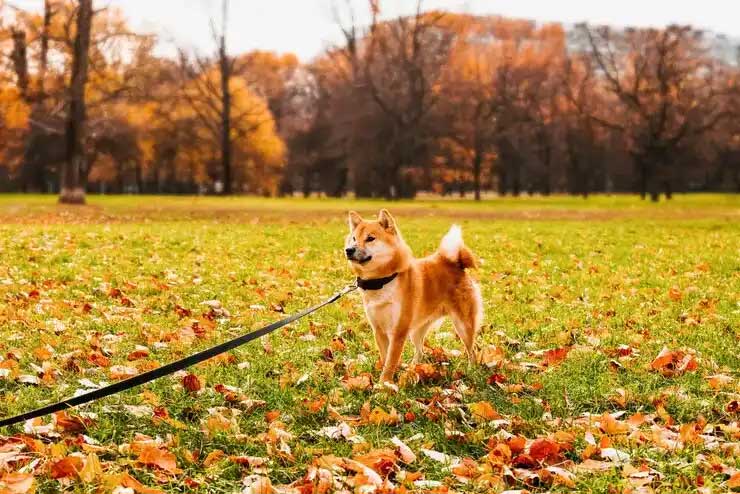Dogs are highly regarded in Japan – so much so that some typical breeds have even been elevated to “national natural monument” status.
Such was the case with the Akita Inu in 1931. The purebred Akita is still considered a status symbol.
In World War II, the dog breed almost disappeared because breeding had come to a standstill. Today, akita best of breed cuervo with its characteristic appearance enjoys international popularity.
Breed history of the Akita Inu

The Akita Inu (inu is Japanese for “domestic dog”) gets its name from the Akita prefecture on the island of Honshu.
His ancestors probably came along with the first people to colonize the island. Experts suspect that in ancient times there were crossbreeds of gray wolves. All this contributes to the Akita Inu being considered one of the oldest and most original dog breeds.
The task of these dogs was to hunt, even for bears. As draft dogs, they helped in daily life in the countryside.
The Akita Inu has the status of “national natural monument” in Japan by imperial order.
The animals were not allowed to be exported until 1945. After the end of World War II, some bred specimens came to the US, where the “American Akita” (with the slant of a German Shepherd) now exists as a separate breed.
Both “Akitas” are recognized by the FCI (Fédération Cynologique Internationale).
Akita inu character
The Akita Inu is a relaxed, good-natured four-legged friend who does not get stressed easily. Aggression or fear is not part of his nature.
On the other hand, he tends to dominate when he feels superior to his human and possesses a fair amount of willfulness.
The dogs are vigilant and strongly urged to protect their human pack. The Akita Inu is anything but prone to blind obedience—it also doesn’t place great importance on pleasing its people.
He usually ignores strangers completely as long as he doesn’t see them as a source of danger.
The Akita is the personification of the enigmatic Eastern character. A dignified, proud, courageous dog with a fearless yet even-tempered character who does not lose control in unusual or stressful situations.
A certain dignity can be recognized even in a puppy. It is an ever-patient playmate to children and is not to be trifled with when it comes to protecting the family and home. And especially in the hands of a suitable owner, it will be a pleasant dog.
Getting along with other pets
It tends to dominate other dogs.
Average age
These proud dogs often only live to be about 8 years old but treated well, and with the right food, they can live up to 10 years.
Average size and weight
This is again a fairly large dog with males growing to about 75cm and weighing up to 50kg and females 64cm and 36kg.
Raising and caring for the Akita Inu.
The Akita Inu needs the guidance of a confident owner whom it can accept as the pack leader and whose directions it can follow.
With empathy, consistency, and respect for the animal’s personality, education is not difficult.
Well-socialized and steadfast, Akita Inu is a fantastic family and companion dog that needs connection with a manageable circle of people.
These active dogs like to move and should have plenty of room to move around. Long walks and outdoor activities are necessary if no garden or ample space is available.
Dog sports and agility are usually not suitable for the Akita. It is more if he can accompany you on a bike ride or a jog.
Care of the akita inu
Care is simple. It is sufficient if you brush the dog regularly to remove fallen hair.
The Akita sheds two and sometimes three times a year, which is something to consider if you are looking for a dog that you also want to keep indoors with a family.
The dog needs extreme exercise and obedience training – this breed needs to be taught from an early age and who is the ‘leader of the pack.’ When the Akita sheds, its coat falls out. It is almost impossible to have him inside, so he needs an outside cage to sleep dry and warm.
Specifics of the Akita Inu
It is quite unusual for a dog, but the Akita Inu is an individualist who often responds to the presence of other dogs with a dominant attitude.
We recommend visiting a puppy group to avoid everyday problems with strange four-legged friends.
Unfortunately, the Akita is at risk for several diseases, which can be prevented through responsible breeding. Contact the with your local association of Akita for contact details of reputable breeders.
The ideal owner
Anyone who accepts the challenge and understands how to do justice to this breed will benefit from a loyal and sweet animal.
Thank you for reading this article about the Akita breed. I hope you find it useful. Please comment or contact us if we missed something about Akita.
Your support is greatly appreciated 🙂
